2024 BMW 750e xDrive First Drive: The 7 Series plug-in hybrid rules too!
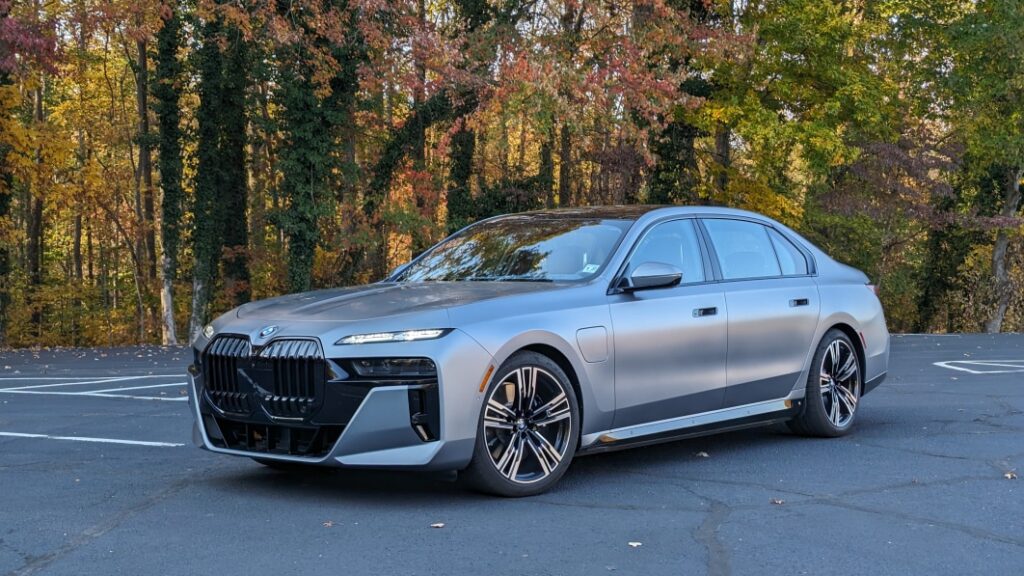
The new 7 Series continues to impress in every format we’ve driven. An all-electric i7? Brilliant. The gas-powered 760i xDrive? A superb mode of transportation. Now, the streak continues with the 2024 BMW 750e xDrive plug-in hybrid.
If you were a little on the fence about going fully electric, the 750e xDrive is a lovely way to dip your toe into all-electric motoring, allowing you to drive right past those pesky EV chargers on a road trip. Its powertrain consists of a 3.0-liter turbocharged inline-six and an electric motor mounted in the eight-speed automatic transmission. Total system output is a stout 483 horsepower and 516 pound-feet of torque – the electric motor provides 194 hp on its own. For comparison’s sake, this makes the 750e more powerful than the standard 740i, but not quite as potent as either the V8-powered 760i xDrive or the dual-motor i7 xDrive60. Nevertheless, this PHEV will do the 0-60 mph sprint in just 4.6 seconds.
So, the pure performance numbers are great. Electric performance is pretty great on paper, too. The 750e xDrive is EPA-rated for 34 miles of all-electric range with its 14.4-kilowatt-hour battery pack fully charged. That’s respectable, but compare it to the new S-Class PHEV that’s rated for a stunning 56 miles of electric range, and it’s a little less exciting. Still, 34 miles is plenty for the average American’s commute, and you could argue that carrying around less battery weight is an advantage when it comes to efficiency (the Mercedes’ battery is nearly twice as large as the 7 Series’). You’ll see a maximum charge speed of 7.4 kW with the 750e, though BMW does not provide a 0-100% charge time estimation.

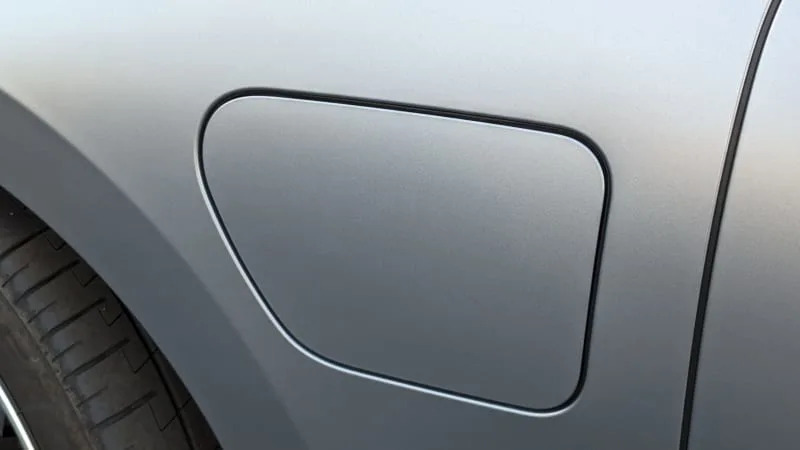
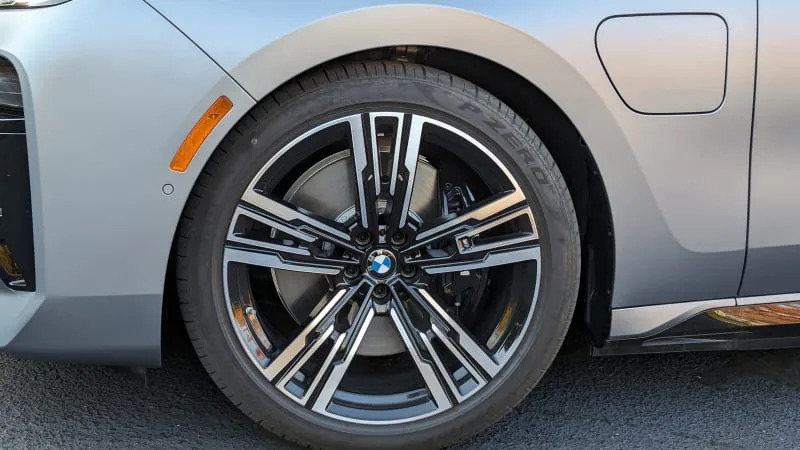
The drive starts in Electric mode, which resists turning on the gasoline engine unless you push past the throttle detent. The 7 Series PHEV springs forward with far more verve than expected for 194 ponies. For that, we can thank BMW’s new “pre-gearing stage” used for the first time in this plug-in hybrid.
Here’s how BMW describes it: “This innovation enables the electric drive system integrated into the transmission housing in a compact, weight-saving design to generate drive torque available either on its own or in addition to the power developed by the combustion engine that could normally only be achieved using a far larger and heavier electric motor. The optimized power delivery achieved with the pre-gearing stage between the electric motor’s rotor and the transmission’s input shaft makes a clear difference both when accelerating off the line and putting in a quick burst of speed.”
The results are exactly how BMW describes them. This car positively scoots in electric mode. One of the biggest and most annoying hurdles with PHEVs is how slow or anemic they might feel when being driven in electric mode. This tech makes the 750e feel anything but slow when you floor it from a light or need to make a quick move. Unlike our long-term 330e that was a bit sluggish once you got over city speeds, the 750e keeps on accelerating before finally starting to weaken above 55 mph. You even get some sweet Hans Zimmer electric sounds the likes of which you’d hear in BMW’s EV models. From a practical standpoint, if electric acceleration was a sticking point for you in PHEVs before, this 7 Series might be your answer.
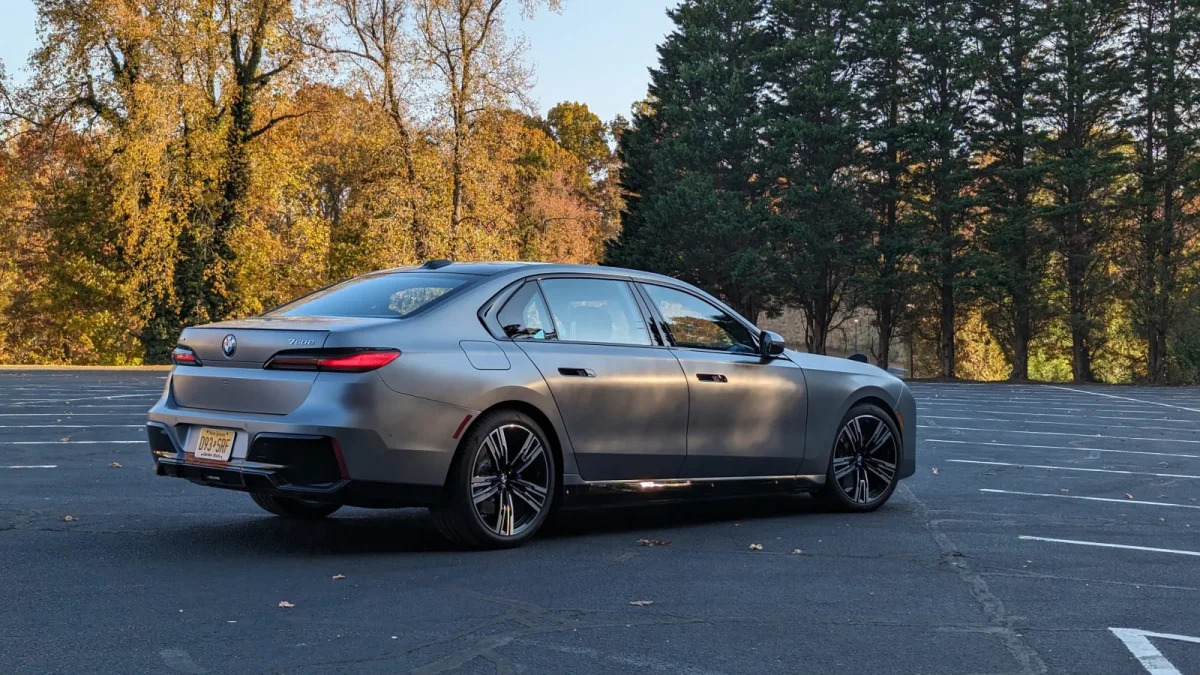
All of the above said, integrating the electric motor into the transmission still comes with the typical “shifts” as you accelerate with the gas motor off. BMW’s done an admirable job of smoothing out those cog changes (they’re certainly more subtle than our aforementioned 330e long-termer), but pay close attention, and you can sense the car cycling through the gears as you accelerate. An EV is undeniably smoother, ultimately making the i7 that much more silky and seamless to drive, even if it’s splitting hairs at this point.
Once electric power is depleted, or you want full acceleration, the velvety inline-six fires up. It’s quiet and makes 308 horsepower on its own, but the noise that you do hear is a good one as every BMW inline-six tends to offer. Unleashing the powertrain’s full potential will put your head into the soft headrest and have you a little surprised at just how rapid this giant boat of a sedan is. Cruising at highway speeds will see the six-cylinder melt into the background, and if you start the trip off with both a full charge and full tank, the 750e xDrive has a driving range of 504 miles, easily pummeling the i7 as the superior long-haul sled.
As 7 Series tend to be, this PHEV is a pleasure to slice through a good stretch of road in. It’s rocking the same adaptive two-axle air suspension as the rest of the lineup, and when you put it into Sport mode, this 7 does a good impression of a 5 Series by utilizing its rear-wheel steering and adaptive suspension to shrink-wrap the car around you. The powertrain transitions and smoothness of the combined power sources makes for harmonious acceleration. At no point does it feel clunky or confused either – BMW did a good job with this car’s powertrain and chassis tuning to make it do things that seem improbable given its 5,635-pound curb weight.
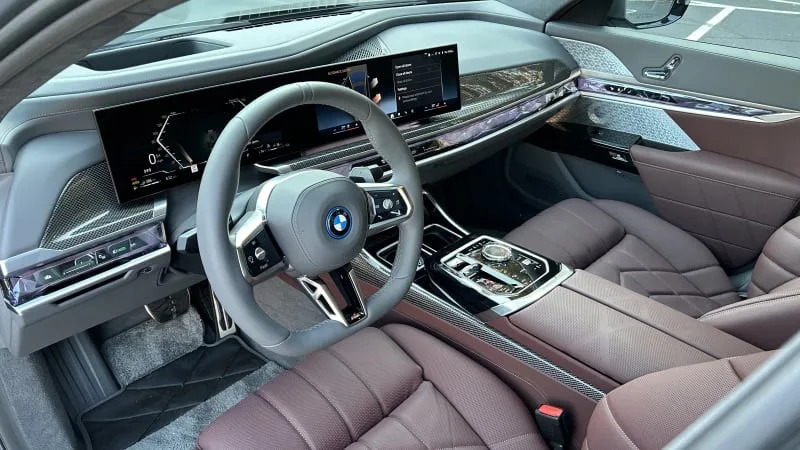



Being entirely ensconced in the 7 Series’ interior while you’re barreling down a country road is one of the most relaxing places to be for enthusiastic driving, too. Our tester featured a beautiful Amarone Full Merino Leather interior with carbon fiber trim that, while a touch tacky in theory, blended together nicely with the interior’s vibe. The PHEV features unique display software – tinted blue as BMW tends to do with hybrids – that make sure you stay informed about both its gas and electric range status. It would’ve been nice to see some hard buttons in the beautiful crystal glass-filled center console area to switch between hybrid modes, but a single shortcut will bring up the menu in the touchscreen to customize how you wish to use the battery’s charge.
The rest of the interior is as sublime and essentially identical to any of the other 7 Series trims, and features a similar array of optional content. You even get the same cargo capacity as the gas-only 7 Series because the new battery’s design doesn’t intrude on luggage space (unlike the 330e plug-in hybrid). And if you’re looking from the exterior, your only hints that it’s the PHEV instead of the 740i will be the “750e” badge on the rear, the subtle blue rims around the BMW roundels and the rather obvious charge flap on the driver-side front fender. It’s a hybrid, but it doesn’t scream “green!”
BMW is bringing this 7 Series PHEV into the fold at $107,995, which is $7,600 more than the 740i, but the test car we drove stickered for $135,345. You’ll likely see yourself wishing for expensive options like the $2,000 Driver Assistance Pro Package (it enables hands-free highway driving), the $4,800 Bowers & Wilkins audio system and much more. Even at its high price, the 7 Series PHEV undercuts the Mercedes-Benz S580e by $15,705. We’ve yet to drive Benz’s plug-in S-Class, but considering that it too is sporting an inline-six, a beautiful interior and plentiful electric range, it should prove a tough competitor for this rather lovely 7 Series variant.
Related video:



